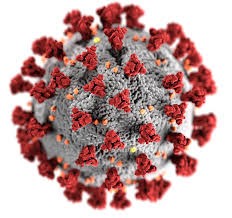My research on wastewater epidemiology allows me to see the good side of sewage….and here is why I think it is an important study area in the current public health challenge.
The coronaviridae have been recognised for many years as a cause of the common cold. However, the 2003 emergence of severe acute respiratory syndrome (SARS) led to great concern that coronavirus infection could be very serious. SARS-CoV, MERS-CoV and the very recent SARS-CoV-2, are examples of zoonotic viruses (once infected only animals but have made the species jump to humans). SARS-CoV-2 or novel coronavirus, is the virus that has led to the COVID-19 crisis.
We don’t know very much about how the novel coronavirus might survive and move within our drinking and wastewater systems. But I think that understanding these pathways could be important in addressing the question of disease transmission.
Evidence from the outbreak of SARS-CoV shows that the virus can survive for long periods of time in water, and therefore exposure and transmission via faecally contaminated droplets of water may be possible according to a study by Casanova and co-workers[1]. Looking today at strategies that can help public health authorities with their COVID-19 a number of research teams across the globe are using wastewater as a valuable source of information. Researchers at the University of Arizona are using municipal wastewater to monitor the incidence of the virus in communities across the United States. Critically, sewage surveillance and wastewater epidemiology can be used to determine if the virus is present in a community, even if individuals are asymptomatic. Environmental microbiologists have used sewage monitoring programs to study pathogenic viruses for decades, most notably in public health efforts to globally eradicate the poliovirus. In a 2008 study[2] conducted by the university of Arizona team, researchers measured the survival of coronaviruses in wastewater. They found that coronaviruses die off very rapidly in wastewater, with a 99.9% reduction in two to three days.
This and recent studies at KWR in the Netherlands, has demonstrated the importance of wastewater epidemiology in understanding the occurrence and persistence of this disease in Ireland and across the globe.
[1] L. Casanova et al., Water Research, 43 (2009) 1893.
[2] P. M. Gundy et al., Food Environ Virol (2009) 1:10–14


Recent Comments